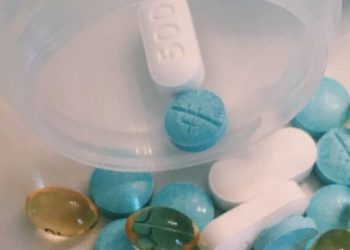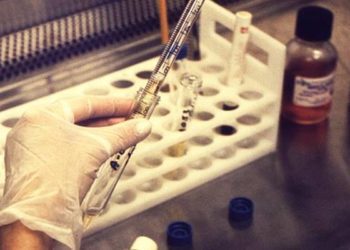Assessment of lipid biomarker distribution in dried blood spots for newborn screening
1. In a retrospective cohort study, the distribution of low density lipoprotein cholesterol (LDL-C) and apolipoprotein B (ApoB) levels obtained from dried blood spots of newborns may be useful for newborn screening of familial hypercholesterolemia.
2. Total cholesterol, LDL-C, and ApoB were observed in highest concentrations during winter months.
Evidence Rating Level: 2 (Good)
Study Rundown: Familial hypercholesterolemia (FH) is a congenital disorder characterized by elevated low density lipoprotein cholesterol (LDL-C) levels in the blood. Because of the severe and early-onset cardiovascular disease associated with FH, developing a newborn screening method is of great interest. This retrospective cohort study sought to characterize total cholesterol (TC), LDL-C, and apolipoprotein B (ApoB) biomarker distributions from newborn dried blood spots (DBS) to determine potential markers for FH screening. DBS specimens were obtained from 10,004 newborns between day of life one and three. When normalized to multiples of the mean (MoM), TC showed the smallest range of values (0.36-1.82) while ApoB showed the widest range of values (0.07-4.39). The 99th percentile of MoM for TC and ApoB showed significant differences across the various birth weight groups, while LDL-C did not show significant differences across birth weight groups. Temporal variation in biomarker concentrations occurred, with greatest concentrations being observed in winter months, and lowest concentrations being observed in summer months. The results of the study indicate that LDL-C and ApoB had distributions that may be of use for newborn screening of FH. One limitation of this study is that ApoB is more unstable than TC or LDL-C, and so ApoB values may be inaccurate due to degradation owing to variable transport conditions. Furthermore, it is possible that maternal factors influence lipid biomarkers during the newborn period that do not persist later in life. Further studies examining the lipid values at birth and measuring these values at later ages may be useful for correlating neonatal data with clinical outcomes.
Click to read the study in The Journal of Pediatrics
Relevant Reading: Familial hypercholesterolaemia in children and adolescents: gaining decades of life by optimizing detection and treatment
In-Depth [retrospective cohort]: DBS were collected from 10,004 newborns between July 2021 and July 2022, and LDL-C, TC, and ApoB levels were isolated from the DBS. Of the 10,004 newborns, 93.8% were classified as term, 5.7% as late preterm, and 0.5% as extremely or very preterm. 51.4% were male and 48.6% female. The means of the distributions of the three biomarkers was determined as 213.6 mg/dL with a standard deviation (SD) of 37.7 for TC, 98.3 mg/dL with an SD of 25.9 for LDL-C, and 24.7 mg/dL with an SD for 14.1 for ApoB. The range of the distribution for TC as a MoM was 0.36-1.82, 0.39-2.73 for LDL-C, and 0.07-4.39 for ApoB. Given the aim to assess these biomarkers for newborn FH screening, the difference in the 99th percentile of MoM was computed between gestational age, sex, and birth weight groups. For TC, there was a statistically significant difference of 0.10 (95% CI 0.03-0.15) points between the 99th percentile of MoM between the term (1.40) and late preterm (1.50) group. For LDL-C a statistically significant difference of 0.09 (95% CI 0.02-0.17) points between the 99th percentile of MoM between early/very preterm (1.66) and term (1.57) infants. For ApoB, the early/very preterm group had a significantly higher 99th percentile of MoM (4.27), 1.81 points (95% CI 0.33-3.29) higher than the late preterm group, and 1.97 (95% CI 0.49-3.44) points higher than the term group. A statistically significant difference in ApoB 99th percentile of MoM of 0.23 points (95% CI 0.11-0.35) between females (2.45) and males (2.22) was seen. Seasonal variation in both the 50th and 95th percentiles were observed for all biomarkers, with the maximum values being observed in northern hemisphere winter months (December to February), and minimum values being observed in northern hemisphere summer months (June to August).
Image: PD
©2023 2 Minute Medicine, Inc. All rights reserved. No works may be reproduced without expressed written consent from 2 Minute Medicine, Inc. Inquire about licensing here. No article should be construed as medical advice and is not intended as such by the authors or by 2 Minute Medicine, Inc.









